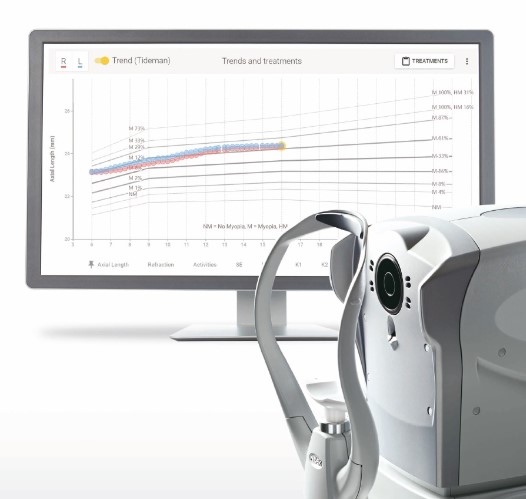Nidek Biometer to measure axial length.
Optical Biometry
Cooper & Lourie Family Optometrists use the most up-to-date technology with our myopia management practice with Nidek Optical Non-contact Biometer (available at our Nedlands practice only)

Additionally, optical biometry helps assess the effectiveness of treatments like orthokeratology in slowing Myopia Progression.
Myopia Control in Children
Myopia (commonly called ‘shortsightedness’) is becoming more common in children, with the prevalence among Australian 12 year olds doubling in 6 years. By 2050, it is estimated that approximately 50% of the world’s population will be myopic.
Typically, myopia occurs when the eyeball grows too quickly in childhood, or when the eye continues to grow when eye growth should normally stop. Unfortunately, myopic changes are permanent and in turn can increase the life-time risk of sight-threatening conditions such as glaucoma, retinal detachment, cataracts and myopic macular degeneration. However, research is showing there are strategies to slow or prevent the progression of myopia in children.
Cooper & Lourie Family Optometrists offers children and young adults comprehensive myopia consultations. Our optometrists will perform thorough assessment and examination, including ocular biometry, to gather precise measurements of the eye’s dimensions. Ocular biometry is a diagnostic technique used to measure various dimensions of the eye, primarily the length of the eyeball. In the case of myopia, accurate measurements provided by ocular biometry aid in understanding the specific characteristics of the eye’s anatomy, which is crucial for managing and correcting nearsightedness effectively. After the assessment, our optometrists will discuss the best evidence-based treatment options to minimize myopic progression for you or your child.

